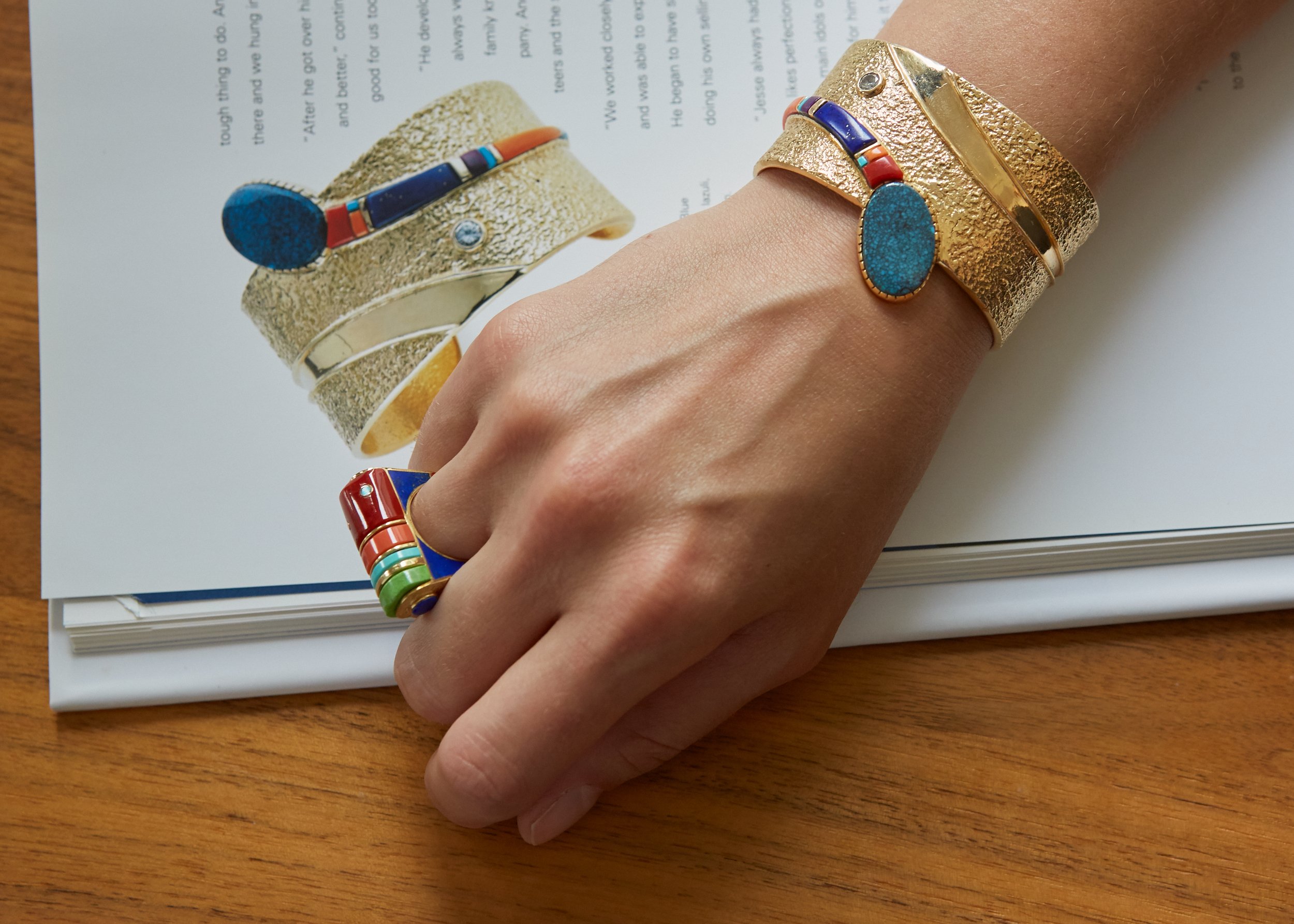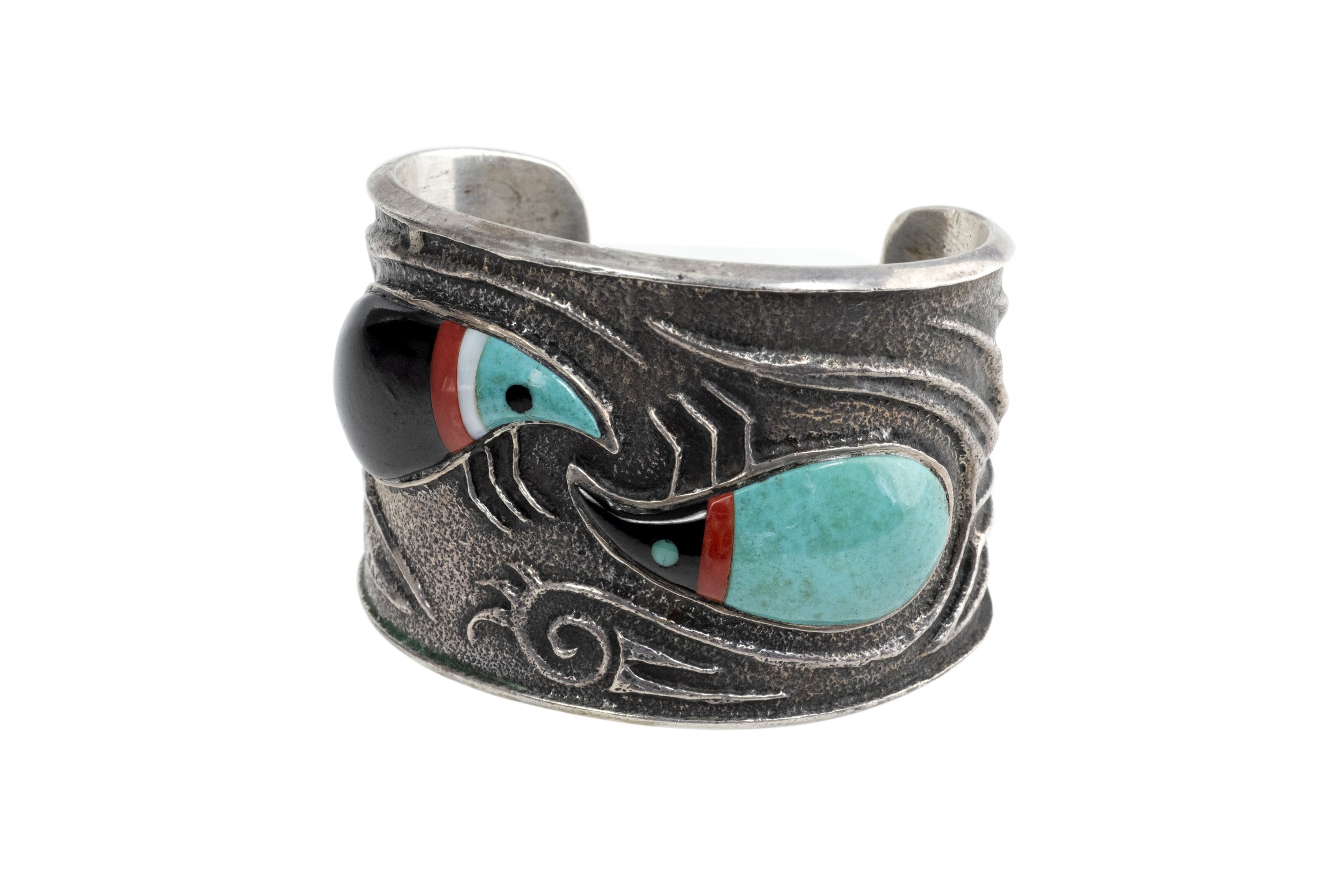PRESTON MONONGYE (Hopi, 1927-1987)
Preston Monongye, born in 1927 in Los Angeles, CA, was a master jeweler considered to be the leader of “New Indian Art” movement of the 1960’s and 1970’s. Monongye learned how to make jewelry from his Uncle Gene Pooyama, an artist and metalsmith.
Monongye was adopted at a young age by Hopi Wutsim Priest, David Monongye, and his wife Nora, and went to live with them in the Hopi village of Hotevilla on Third Mesa, AZ. He grew up surrounded by the Hopi way of life and was part of the Katsina Society where he cultivated his love for weaving, wood carving, and silversmithing. He knew from a young age that he was artistically inclined and enjoyed spending time with Pooyama, who taught him how to melt silver coins and pound them into jewelry.
His passion for the arts continued During WWII, when he served as a paratrooper, and later when he was a medic in the Korean War. He continued in law enforcement but eventually resigned to focus on jewelry full-time.
Monongye, along with Charles Loloma and Lawrence Saufkie, a traditional Hopi jeweler, is considered to be a seminal figure in Native American jewelry and craft landscape. He was a progressive though, stating once “An old piece of philosophy given to me by my father and other men of the Hopi Mesas is, ‘If you can progress without hurting your tradition or your religion, you should do so.” Monongye is known for rough-looking tufa-cast jewelry that contrasted with the refined inlay work that decorated his pieces (inlay had not been a feature of Hopi jewelry). Monongye’s cuffs and pendant necklaces draw on traditional imagery yet abstracted to look modern.
Preston’s son Jesse is also a master jeweler who followed in his father’s footsteps.
Visit our Native American Collection page to see jewelry from our inventory of exquisite Native American jewelry and purchase the catalog, “Material Beauty: Modern Hopi, Navajo, and Pueblo Artist Jewelers.” which accompanied our 2018 exhibition here.





